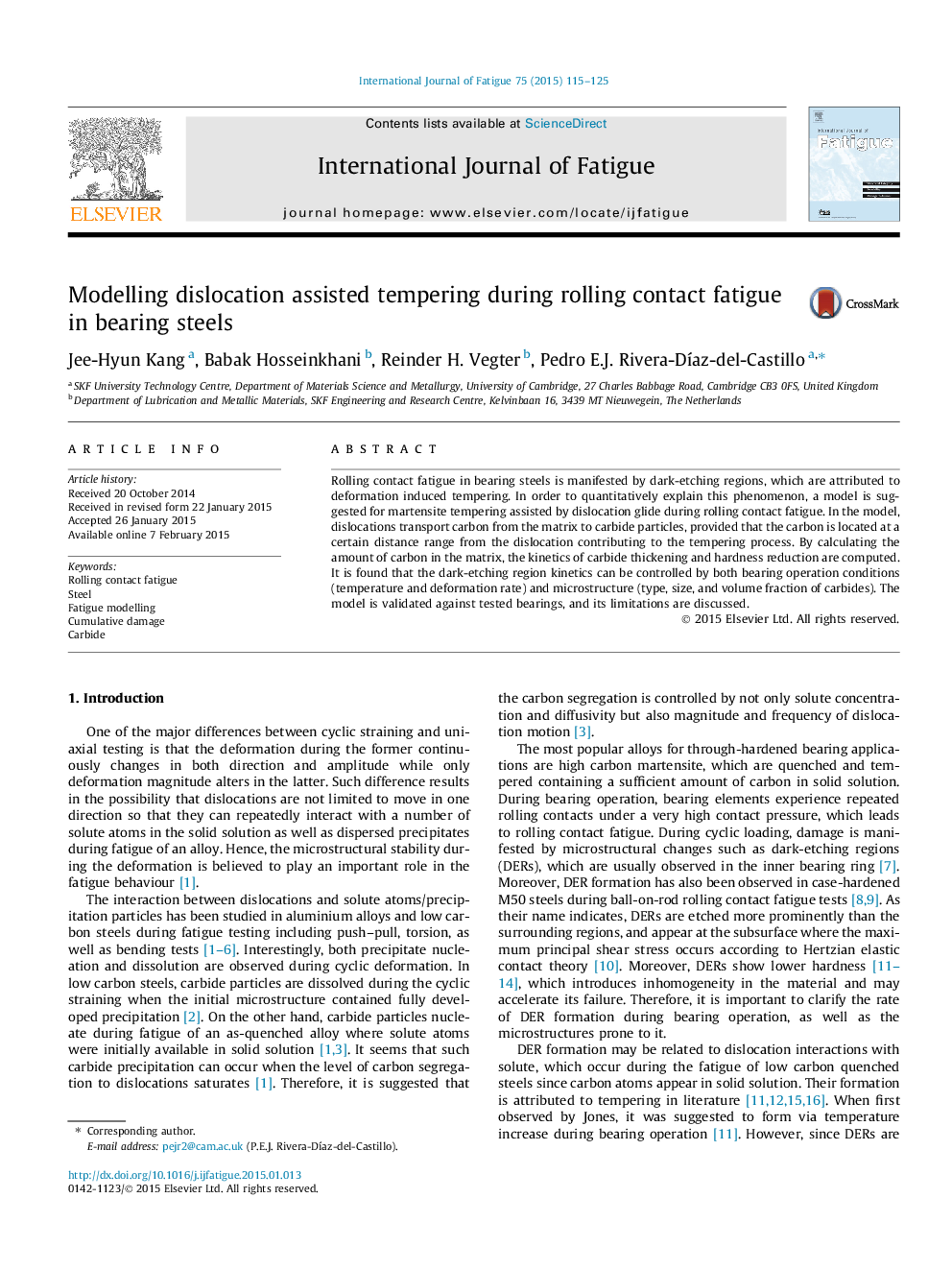| Article ID | Journal | Published Year | Pages | File Type |
|---|---|---|---|---|
| 780653 | International Journal of Fatigue | 2015 | 11 Pages |
•A model for kinetics of dark-etching region during bearing operation is proposed.•Carbide tempering assisted by dislocation movements is considered.•Hardness decrease during the tempering is predicted.•The predicted hardness evolution is compared with bearing test results.•The region formation rate depends on the initial microstructure and test conditions.
Rolling contact fatigue in bearing steels is manifested by dark-etching regions, which are attributed to deformation induced tempering. In order to quantitatively explain this phenomenon, a model is suggested for martensite tempering assisted by dislocation glide during rolling contact fatigue. In the model, dislocations transport carbon from the matrix to carbide particles, provided that the carbon is located at a certain distance range from the dislocation contributing to the tempering process. By calculating the amount of carbon in the matrix, the kinetics of carbide thickening and hardness reduction are computed. It is found that the dark-etching region kinetics can be controlled by both bearing operation conditions (temperature and deformation rate) and microstructure (type, size, and volume fraction of carbides). The model is validated against tested bearings, and its limitations are discussed.
